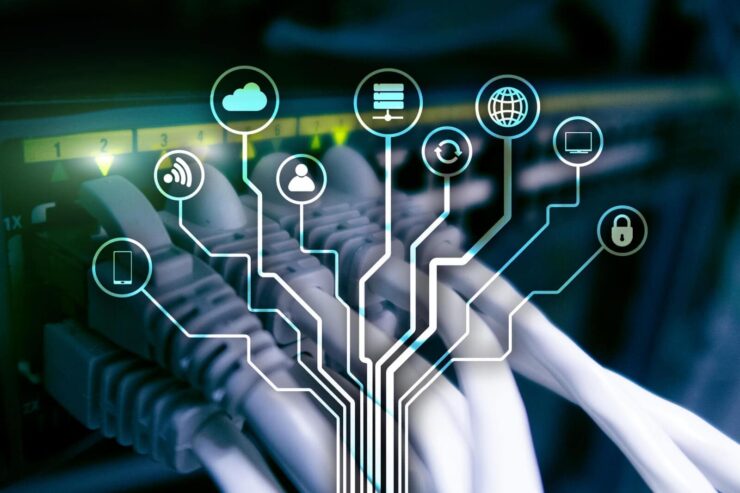The supply chain sector requires applications to exchange documents, and methods to obtain these were successfully introduced through innovative technology. For several years, this has been accomplished with the introduction of EDI services in the sector.
However, lately, the emergence and popularity of a new system called API have been in discussion. This system has entirely various features and works in a different protocol. The question is how to differentiate the two methods from each other.
Read on further to understand the features both of these methods offer and how to choose the right one for excellent results.
Brief Introduction To Both Methods

API stands for Application Programming Interface and works similarly to the EDI system. However, there is variation in the mechanism of the process by which API achieves its outcomes. When using EDI, it connects two EDI systems, but API can connect different systems that communicate together for the result.
API is a cloud-based technology that transfers data from one system to another within seconds. The method includes a web-based protocol. Many companies
prefer the services from API due to its exceptional feature of accessing big data quickly. Alternatively, any involvement of humans is not essential, which could provide an error-free final result.
On the other hand, EDI or Electronic Data Interchange converts data obtained from documents into a physical format. It then converts this data into an electronic format after the process. It works by starting a single secured connection and provides different solutions for the logistics sector.
EDI is an advanced way through which risks involving the displacement of data by accident can be avoided. It also has functions that help mail shipping records and other order forms. Find here completely secure and trustworthy EDI services from experienced professionals.
9 Things That Differentiate API From EDI
1. Process Of Messaging

API facilitates both data exchange in real time and in bulk operations. But while it executes the required data simultaneously, the bulk operations are carried out at different times. At the same time, EDI regulates one single message at a time.
2. Technology Used
As mentioned, API follows cloud-based technology, and EDI depends on on-premise servers.
3. Formats Of Messages

While API usually allows XML, JSON, and YAML formats, EDI executes its tasks with UN/EDIFACT, VDA, UBL, and TRADACOMS, among other formats.
4. Limitations Of The Size Of Data
For API, the securing and protection of the server are a concern. Therefore, it limits the size of the data used for transmitting and processing. EDI doesn’t pose any limitations, receives large quantities of data, and allows them to be used.
5. Standard Of Processing And Handling The Received Data

With universally obtained specifications, typical business transactions are carried out smoothly with the help of the API system. But EDI has a standard defined by the structure of the business transaction intended to be carried out and processed.
6. Process Of Handling Errors
In the API system, the error happens from the sender’s side. The process has a simultaneous approach; the entire process will be stopped when an error occurs. But EDI includes a batch processing system, unlike the API method. Here, the process occurs at different times. Instead, the errors will be received in an application at the recipient’s end.
7. Process Of Updating Data

API provides updates for recipients through polls or notifications, and the updates will be transferred to the recipients each time without any delay.
In EDI, the updates are transmitted in the form of flat information and an upgraded version of the document to the recipient. These data updates help the recipients to update and make needed changes whenever necessary.
8. Secured Features
Both API and EDI are said to be secure and safe to use. API might follow only some guidelines and regulations. However, EDI is believed to follow all the regulations and is entirely trustworthy.
9. Features For New Hires

API doesn’t allow an easy onboarding system. Each new trading partner has to build a one-to-one connection from the start if the company fails to follow overall integration management with an enterprise integration platform.
New partners can be added without complications if the trading partners already use the same EDI standard.
Which Method Should Be Chosen?
The requirements of the company and the trading partners are prominent factors when deciding which services are best. Both methods are excellent with incredible features. Several other factors, like security and functioning, must be considered while choosing the suitable method for the company.
API is not a great solution if security is an issue involving financial documents, as they do not follow all the compliance regulations. Apart from security factors, API is a better solution than EDI if a cost-effective product is a final target. Moreover, API doesn’t require any continuous maintenance and translation services.
At the same time, onboarding support is complex when using API because of the addition of new trading partners, and communication is challenging compared to EDI services. The end solution could be either of these, as API and EDI have their benefits and disadvantages.
Selecting the systems can be tricky as each has unique features and exceptional services. Even though factors can be compared and a method can be selected and sorted out, combining both methods and their features is better.
Conclusion

It is evident that API and EDI methods offer satisfying services at the end of the day but with different features. These days, API is mainly used, and its rising usage by esteemed companies has given it a renowned name in the logistics sector. However, EDI has been in the field of the supply chain for decades since the late 1960s.
If the connection should be easily maintained, API is a solution for all companies looking for it. Cloud-based technology is undoubtedly a significant aspect and advantage of API. On the contrary, if the trading partner already uses an EDI connection, the answer is EDI services.
Whatever the solution, it will vary among companies and their requirements but with exceptional outcomes.

